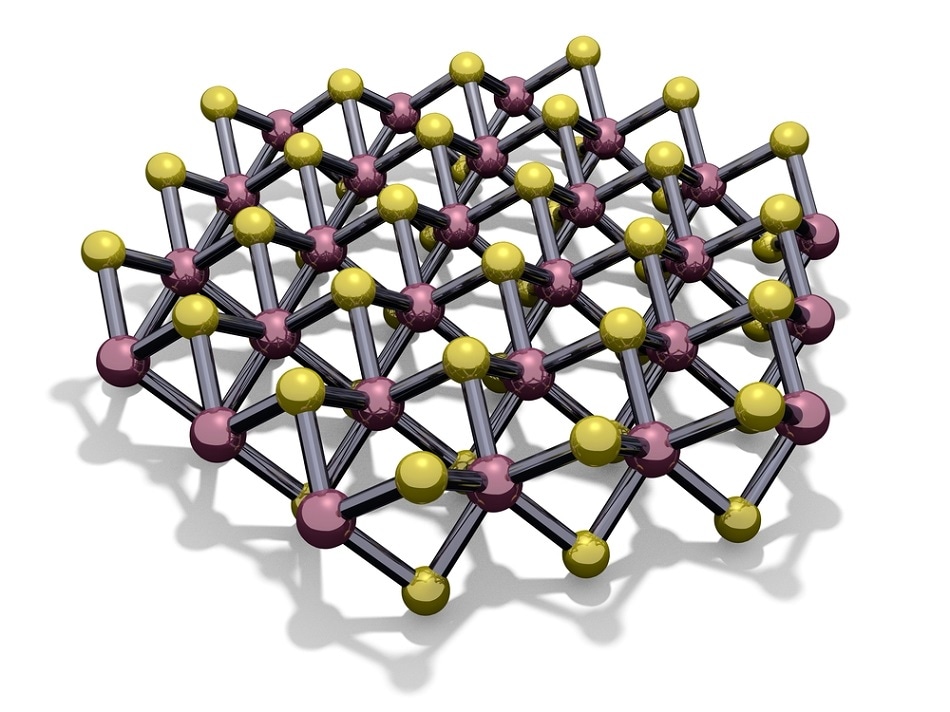Sep 11 2017
A team of Researchers from the National University of Singapore (NUS) have proven new findings on the properties of 2D molybdenum disulfide (MoS2), an extensively studied semiconductor of the future.
 ogwen/ Shutterstock.com
ogwen/ Shutterstock.com
In two individual studies guided by Professor Andrew Wee and Assistant Professor Andrivo Rusydi from the Department of Physics at the NUS Faculty of Science, the Researchers discovered the role of oxygen in MoS2, and a novel method to create multiple tunable, inverted optical band gaps in the material. This novel acumen expands the understanding of the inherent properties of MoS2 which could potentially revolutionize its applications in the semiconductor sector.
The studies were published in renowned scientific journals Physical Review Letters and Nature Communications respectively.
MoS2 - An alternative to graphene
MoS2 is a semiconductor-like material that displays pleasing optical and electronic properties for the development and improvement of photodetectors, transistors and solar cells.
MoS2 holds great industrial importance. With an atomically thin two-dimensional structure and the presence of a 1.8 eV energy band gap, MoS2 is a semiconductor that can offer broader applications than graphene which lacks a band gap.
Professor Andrew Wee, the Department of Physics, the NUS Faculty of Science
Presence of oxygen alters the electronic and optical properties of MoS2
The first study by NUS Researchers was published in Physical Review Letters on 16th August 2017, in which an in-depth analysis showed that the energy storage capacity or dielectric function of MoS2 can be modified using oxygen.
The team noticed that MoS2 exhibited a higher dielectric function when exposed to oxygen. This new knowledge revealed how adsorption and desorption of oxygen by MoS2 can be used to alter its optical and electronic properties to match various applications. The research also emphasizes the need for sufficient consideration of extrinsic factors that may impact the properties of the material in future research.
This paper’s first Author is Dr Pranjal Kumar Gogoi from the Department of Physics at NUS Faculty of Science.
MoS2 can possess two tunable optical band gaps
In the second study published on 7th September 2017 in Nature Communications, the NUS team discovered that in contrast to conventional semiconductors which normally have only one optical band gap, electron doping of MoS2 on gold can develop two unusual optical band gaps in the material. Furthermore, the two optical bandgaps in MoS2 are tunable via a simple, uncomplicated annealing process.
The research team also identified that the tunable optical band gaps are induced by strong-charge lattice coupling due to the electron doping.
The first Author of this second paper is Dr Xinmao Yin from the Department of Physics at NUS Faculty of Science.
The research findings from the two studies provide insights of other materials that possess similar structure with MoS2.
MoS2 falls under a group of material known as the two-dimensional transitional metal dihalcogenides (2D-TMDs) which are of great research interest because of their potential industrial applications. The new knowledge from our studies will assist us in unlocking the possibilities of 2D-TMD-based applications such as the fabrication of 2D-TMD-based field effect transistors.
Assistant Professor Andrivo Rusydi, the Department of Physics, the NUS Faculty of Science
Making the most of these findings, the team will be applying similar studies to other 2D-TMDs and to search different possibilities of producing new, valuable properties in 2D-TMDs that are not present in nature.